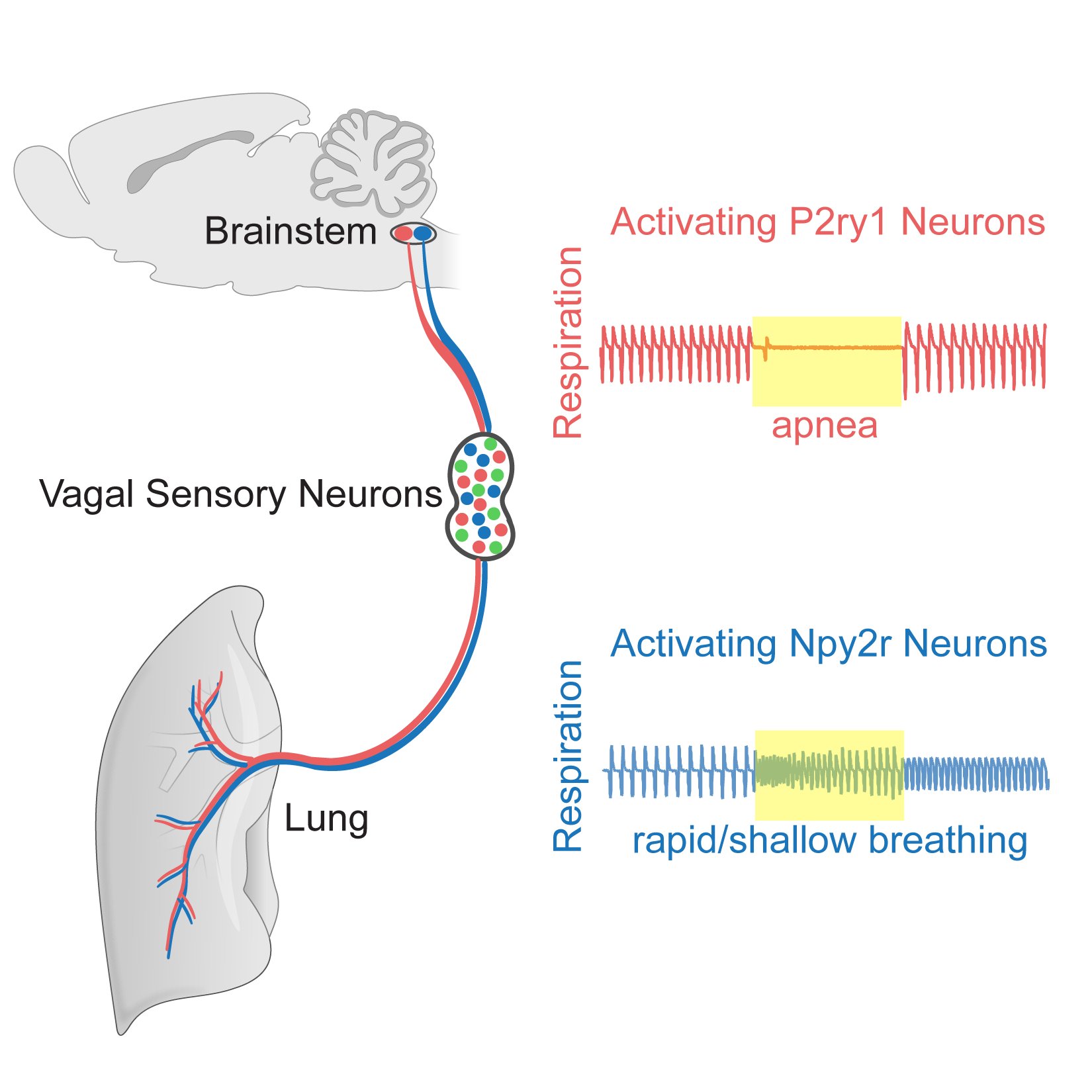
Breathing is essential for survival, and under precise neural control. The vagus nerve is a major connection between lung and brain required for normal respiration. In a recent publication in Cell, the Liberles Lab used molecular and genetic approaches to deconstruct the sensory vagus nerve, identifying two small populations of sensory neurons that exert powerful and opposing effects on breathing. Genetically guided anatomical mapping using Cre/LoxP technology revealed that these neurons densely innervate the lung and send long-range projections to different stereotyped brainstem targets. Optogenetic stimulation of one neuron type (P2ry1) acutely silences respiration, trapping animals in a state of exhalation, while activating another (Npy2r) causes rapid and shallow breathing. Activating P2ry1 neurons had no effect on heart rate and gastric pressure, other essential vagus nerve functions. Thus, the vagus nerve contains genetically definable labeled lines with different anatomical connections and autonomic roles. Specific manipulation of breathing-control neurons electrically or pharmacologically may impact airway diseases like asthma or apnea.